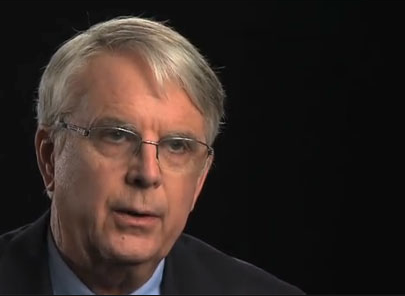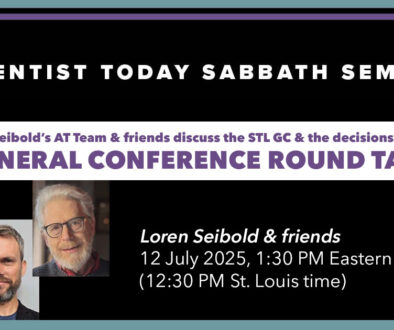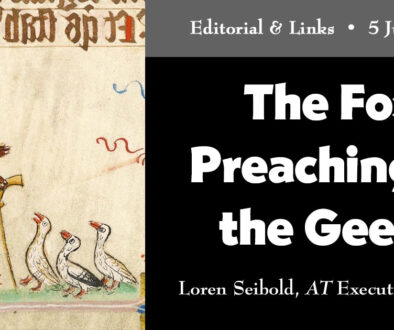Book Review: Donald E. Casebolt, Child of the Apocalypse & Father Miller’s Daughter
Reviewed by Ronald Graybill
Donald E. Casebolt, Child of the Apocalypse: Ellen G. White (Eugene, OR, Wipf & Stock, 2022).
Donald E. Casebolt, Father Miller’s Daughter: Ellen Harmon White (Eugene, OR, Wipf & Stock, 2022).
If you were persuaded by Numbers’ Prophetess of Health that Ellen White borrowed erroneous health teachings from secular sources, Don McAdams will soon remind you that she also borrowed erroneous historical facts for The Great Controversy. His study, Ellen White and the Historians, has just—finally—been published with a new introduction and some new essays.
Don Casebolt’s Child of the Apocalypse and his second book, Father Miller’s Daughter, make a persuasive case that Ellen White’s interpretations of Bible prophecies were also borrowed from an uninspired source—William Miller—and are in error. That persuasive case will become conclusive unless competent apologists come forward with effective rebuttals.
The first of these two books, Child of the Apocalypse is the brief, popular, less controversial one. It offers a new and intriguing account of Ellen’s childhood and youth. Her career as God’s messenger didn’t begin with her first vision. Casebolt describes a whole series of ascending steps, from a first public prayer, to a personal evangelist, to a public, local exhorter, to an itinerant preacher. All along the way Ellen was whiplashed between soaring ecstasy and suicidal despair. Her forward steps were confirmed, not by Bible study, but by ecstatic physical phenomena and frequent dreams.
It was her fervent belief in William Miller’s message that finally helped her escaped her morbid fear of hell and gain assurance of salvation. Years later she would claim that Miller’s calculations were so simple and plain that even children could understand them. But Casebolt shows in Father Miller’s Daughter that Miller’s expositions of the prophecies were complex, convoluted, and often incomprehensible.
Furthermore, 12-year-old Ellen, with a nervous system still shattered by her childhood brain injury, was in no way competent to grasp the intricacies of Miller’s arguments. Even Adventist apologist F. D. Nichol in his defense of Miller, The Midnight Cry, found Miller’s interpretations often farfetched and fanciful.
Casebolt is a bit more colorful when he gets into his detailed, granular, analysis of Miller’s arguments in Father Miller’s Daughter, describing them as capricious, contradictory, convoluted, discredited, erroneous, fallacious, false, imagined, inaccurate, inappropriate, incomprehensible, insupportable, preposterous, speculative, whacky, and whimsical. This reviewer was himself dumbfounded by the absurdity of some of Miller’s eisegesis. Still, as Mark Noll points out in America’s Book, Miller was contemporary, relevant, and empiricist by the standards of his time, just not by ours.
Still, Ellen White claimed (but Nichol failed to mention) that “angels of God repeatedly visited” Miller and “guided his mind, and opened his understanding.” Casebolt doesn’t go on to wonder what became of those angels after the Disappointment when Miller renounced Oct. 22, 1844, as being a fulfillment of prophecy in any sense. That would class him with those Ellen White saw in her first vision who “rashly denied the light behind them” and fell off the path to heaven. Those angels came back, albeit a bit late, to “watch the precious dust” of Miller’s grave. (1 Spiritual Gifts, p. 168)
Casebolt’s second book, Father Miller’s Daughter, with over 400 pages and more than 600 footnotes, will be more challenging for most readers. But he has covered the subject so thoroughly that his bibliography alone would be worth the price of the book for serious students of Adventist origins. He shows that Miller, far from confining himself to his Bible and concordance, drew extensively on discredited Reformation era historicist commentators for his interpretations, just revising their dates and events. Then Ellen White drew on Miller for her interpretations and interpretive method. Casebolt graciously avoids colorful pejoratives in describing Ellen White’s interpretations, saying only she was wrong or incorrect. However helpful Ellen White’s role has been in her community, fewer Adventists will continue to consider her an unfailingly reliable interpreter of scripture if Casebolt’s findings stand.

Ronald Graybill’s early scholarship earned him an invitation to the Ellen G. White Estate to assist Arthur L. White in writing a six-volume biography of his grandmother. During his 13 years at the White Estate, Ron completed his doctorate in American Religious History at Johns Hopkins University, then taught for a decade at La Sierra University. He spent another decade preparing annual community health reports for Loma Linda University Medical Center and leading grassroots community health projects.




